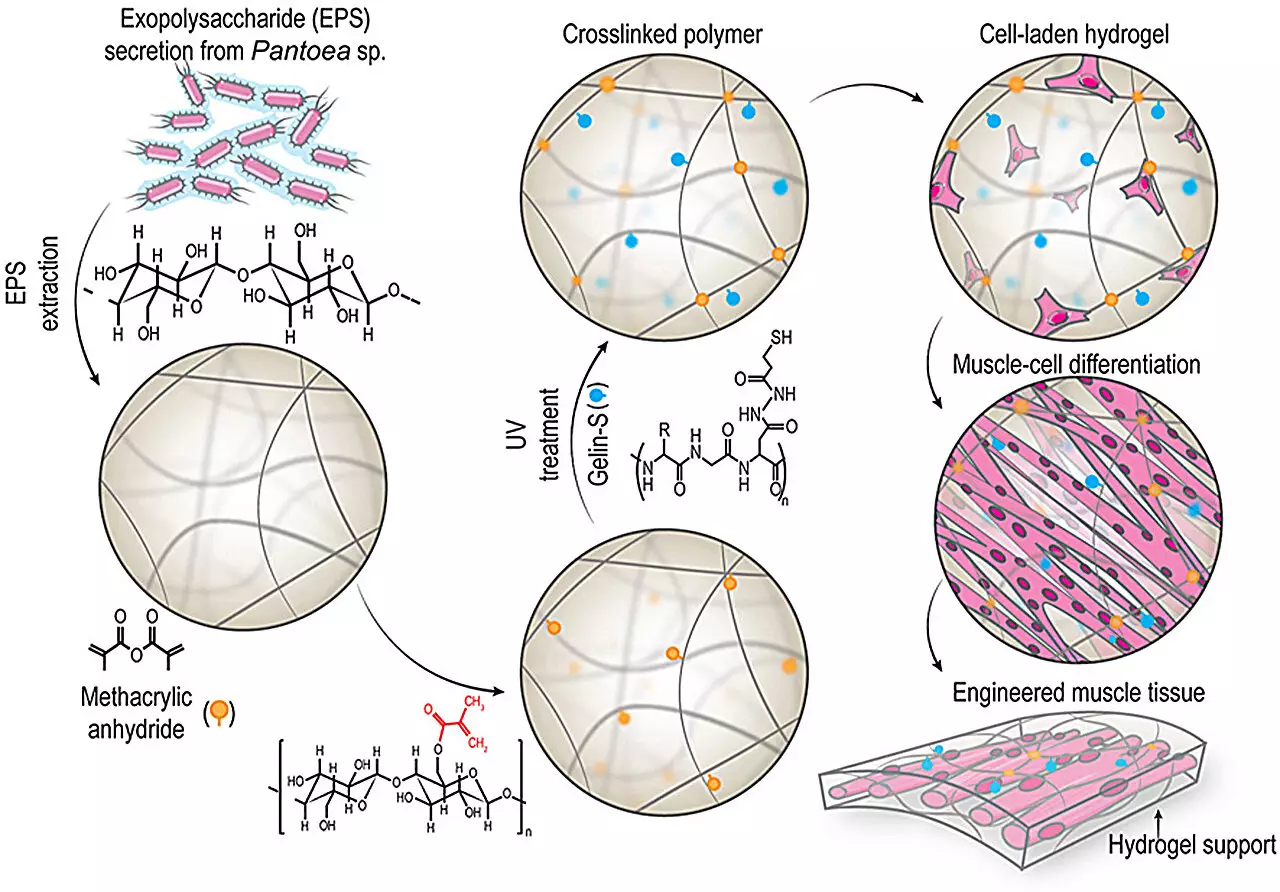Recent advancements in tissue engineering signal a paradigm shift in regenerative medicine. A dedicated research team from the Technical University of Denmark, spearheaded by Alireza Dolatshahi-Pirouz, has made significant contributions by investigating the underutilized healing potential of bacteria. Their work, centered on developing a novel biopolymer, opens new avenues for tissue repair, particularly in the domain of muscle tissues affected by injury.
The spotlight of this groundbreaking study is Pantoan Methacrylate, or PAMA for short, a biopolymer synthesized using the inherent bioproduction capabilities of certain bacteria. Unlike conventional approaches that often rely on synthetic materials with limited biological compatibility, PAMA is derived from natural organisms, thereby enhancing its biocompatibility and effectiveness in tissue regeneration. This innovative biopolymer was formulated into a hydrogel, termed “bactogel,” which demonstrates outstanding physical properties necessary for muscle tissue repair.
The researchers’ work, published in the journal Bioactive Materials, highlights the hydrogel’s impressive resilience, durability, and elasticity—all essential characteristics for mimicking the mechanical environment of living muscle tissues. The implications are vast; this could be a breakthrough in developing targeted therapies for muscle injuries in diverse patient populations.
An in vivo study involving rats has provided encouraging results, showcasing remarkable muscle tissue regeneration and a notable reduction in fibrous tissue, which can complicate healing. The data revealed an astonishing near-complete mechanical recovery, underscoring the hydrogel’s performance in conditions that are mechanically demanding. These results demonstrate PAMA’s potential as a versatile tool in treating muscle injuries, especially for athletes or individuals recovering from traumatic events.
Furthermore, Associate Professor Dolatshahi-Pirouz articulated a bold vision: the integration of this technology in therapeutic settings could transform treatment strategies for various demographic groups, including the elderly and soldiers with injuries. The dual advantages of mechanical support and conducive biological healing mark a significant departure from existing bioactive materials, which often lack the requisite mechanical integrity.
The research team anticipates even greater therapeutic benefits by combining PAMA-based hydrogels with muscle progenitor or stem cells. This synergy could enhance healing outcomes further, paving the way for innovative regenerative therapies. Dolatshahi-Pirouz has expressed an optimistic vision for the future, where “bactomers”—bacteria-derived polymers—could be employed in what he refers to as “regenerative bacto-baths.” Such a scenario envisions on-demand healing solutions, tailored precisely to patient needs, which would represent a monumental leap in regenerative medicine.
The exploration of bacterial-derived biopolymers in the context of muscle tissue regeneration may herald a transformative era in healthcare. As the research unfolds, the prospect of employing naturally derived materials for enhancing tissue repair offers a promising alternative to traditional synthetic methods. The ongoing innovations from Dolatshahi-Pirouz and his team at DTU signify a hopeful trajectory towards advanced treatments, potentially revolutionizing care for patients with muscle injuries across various fields from sports to military medicine.

